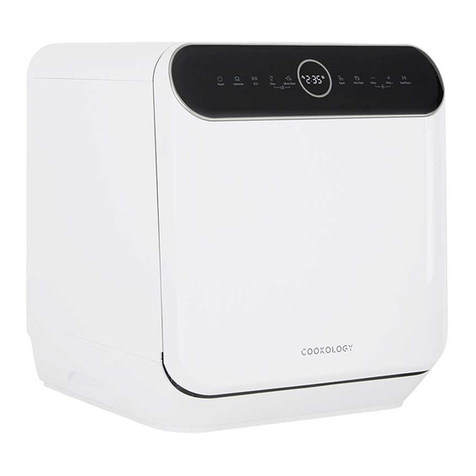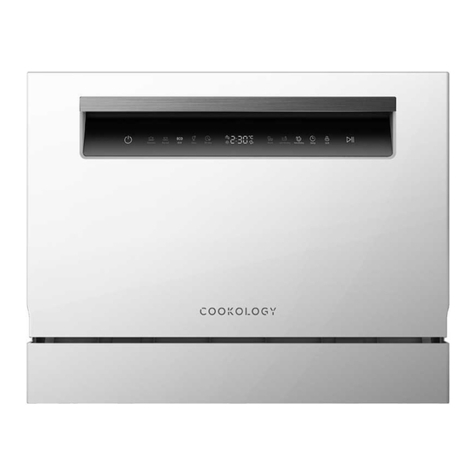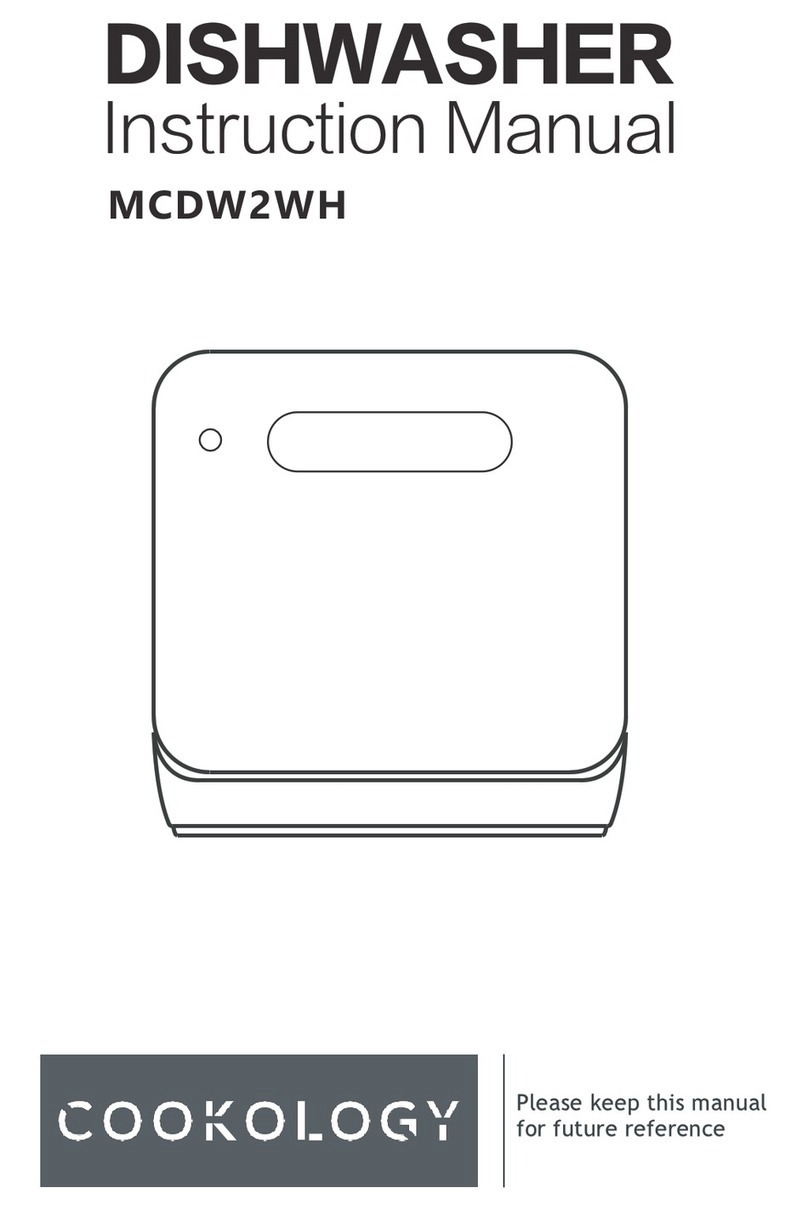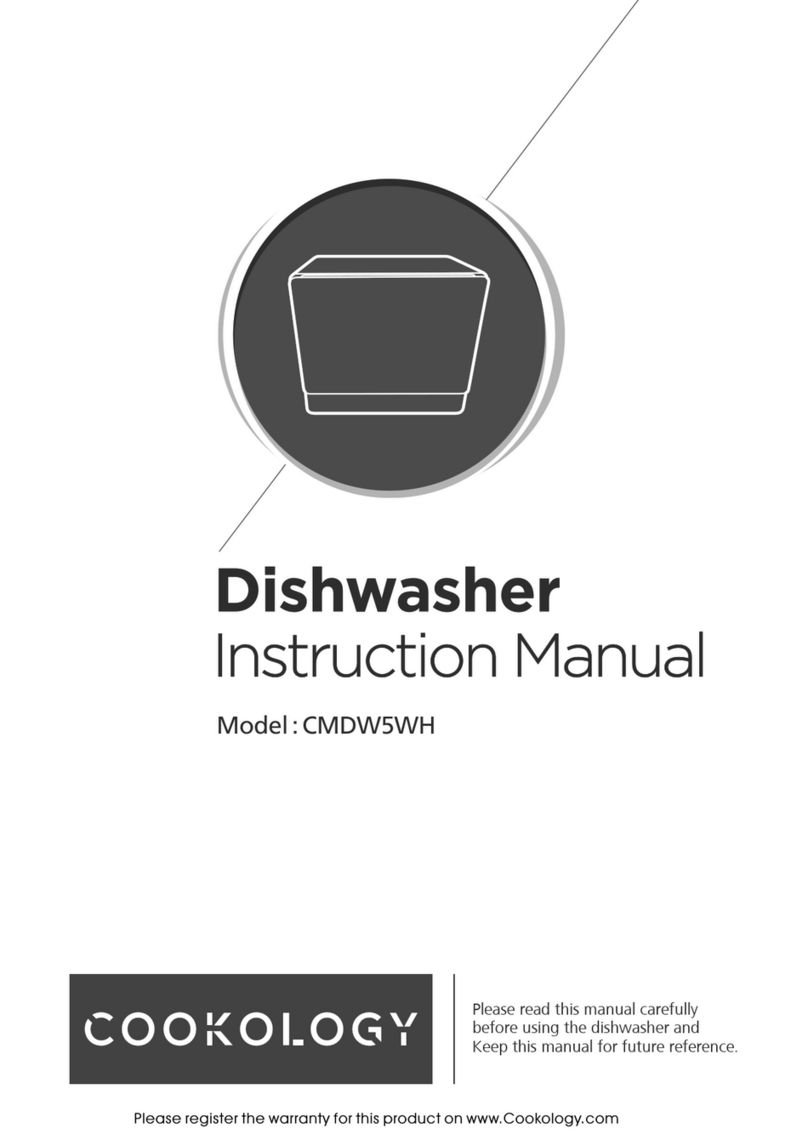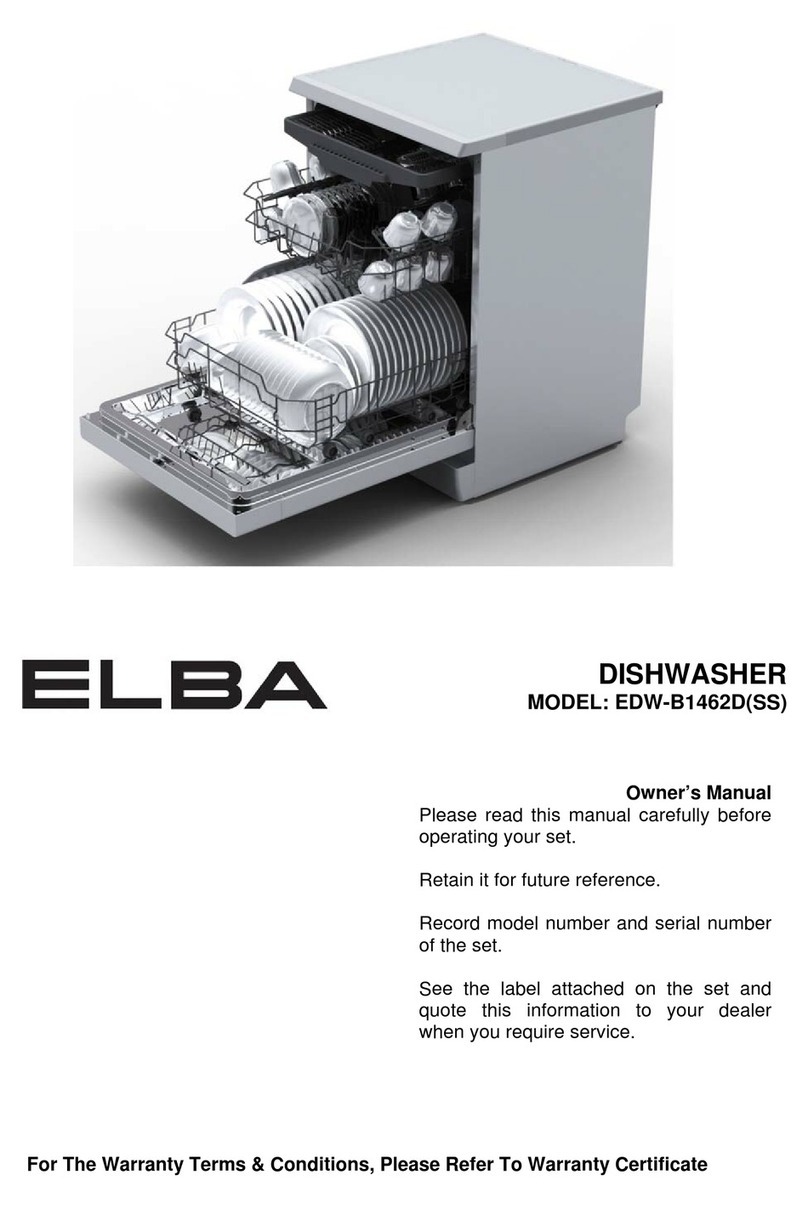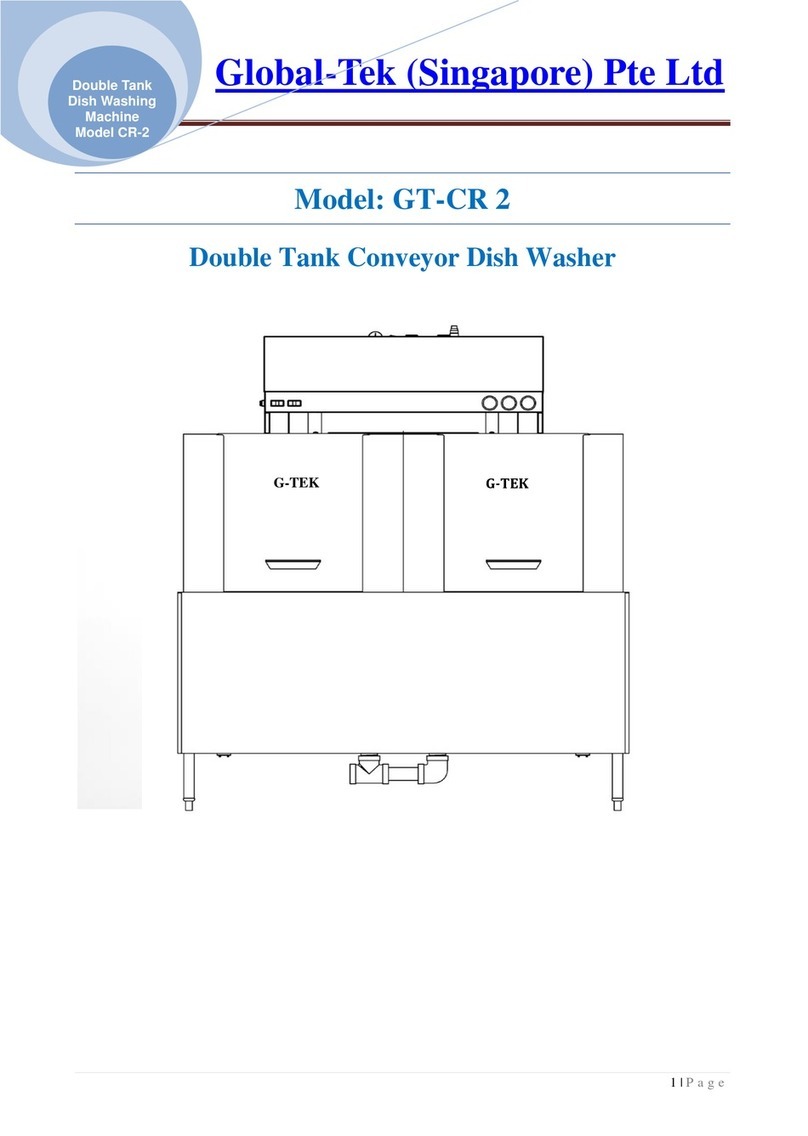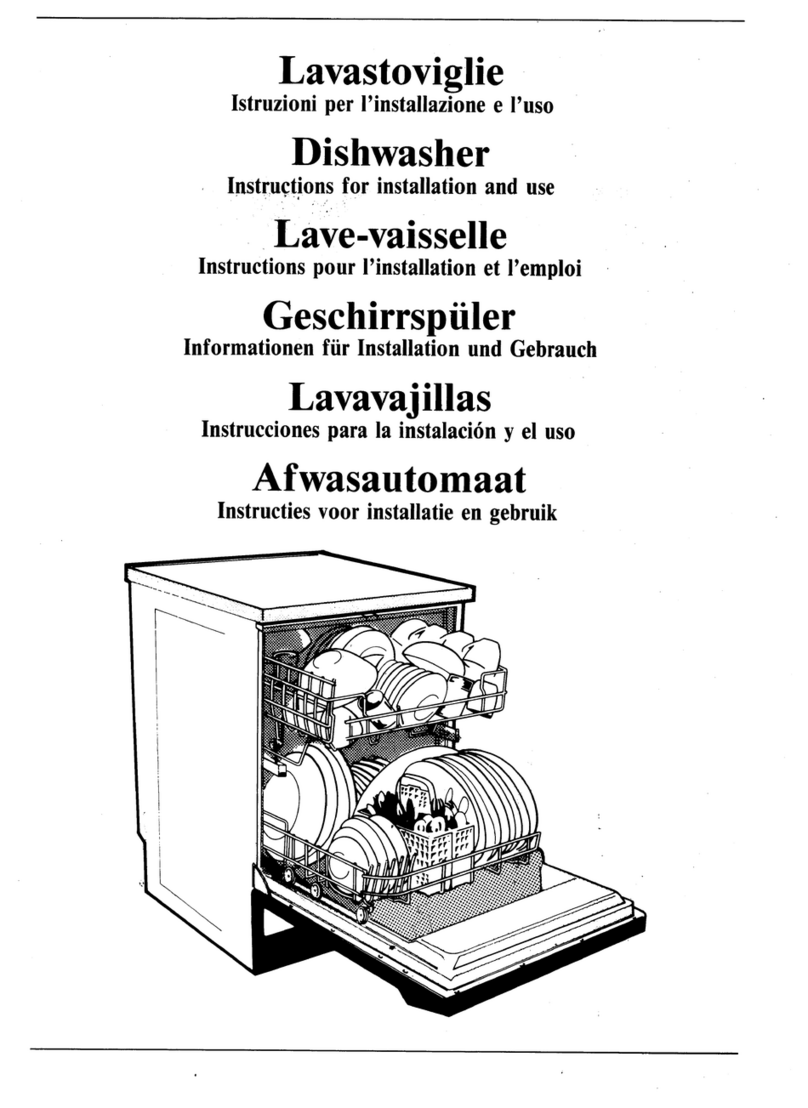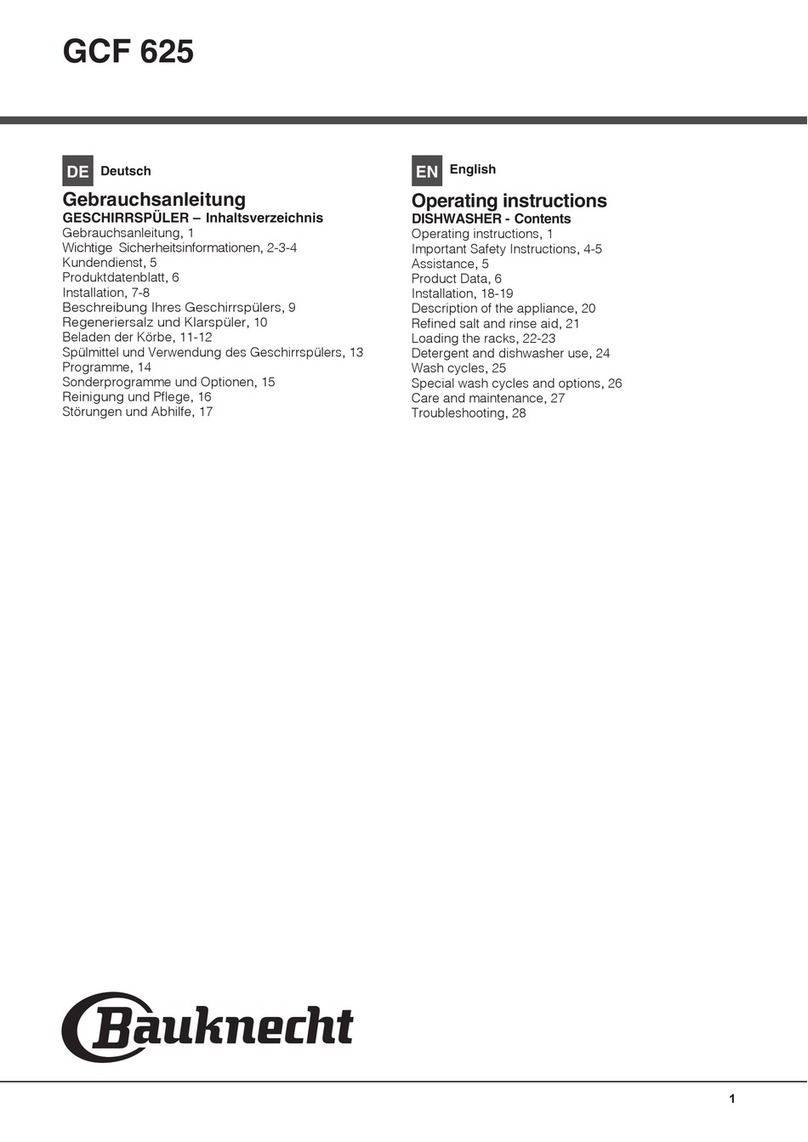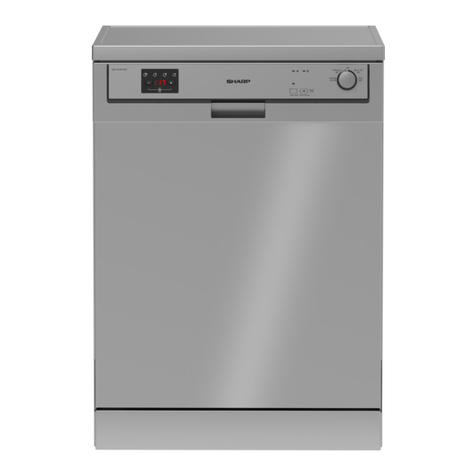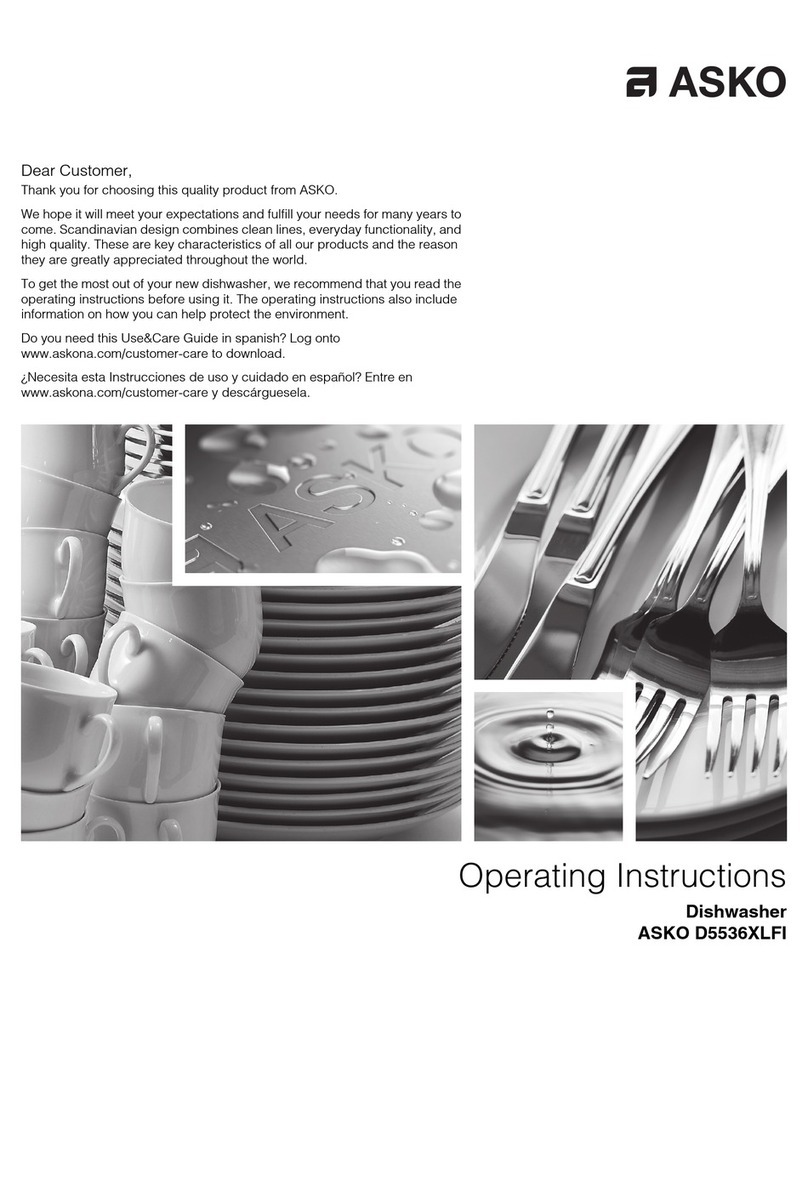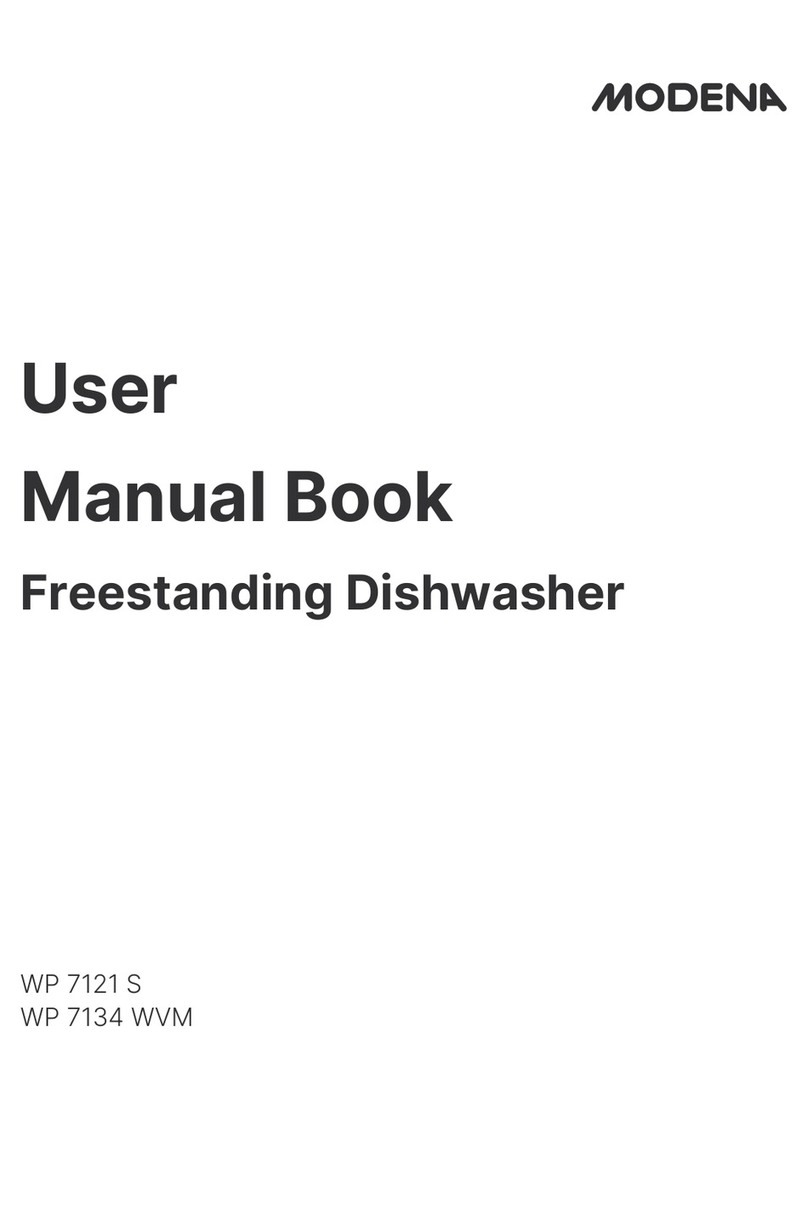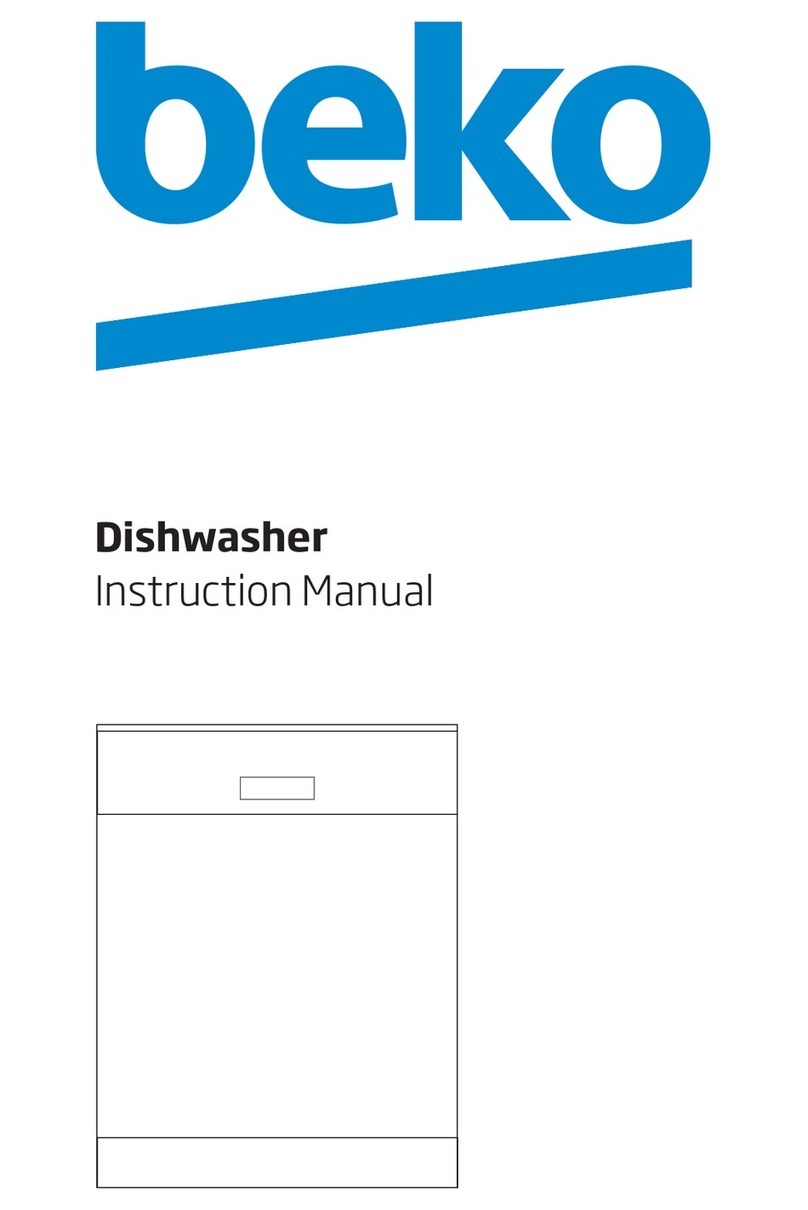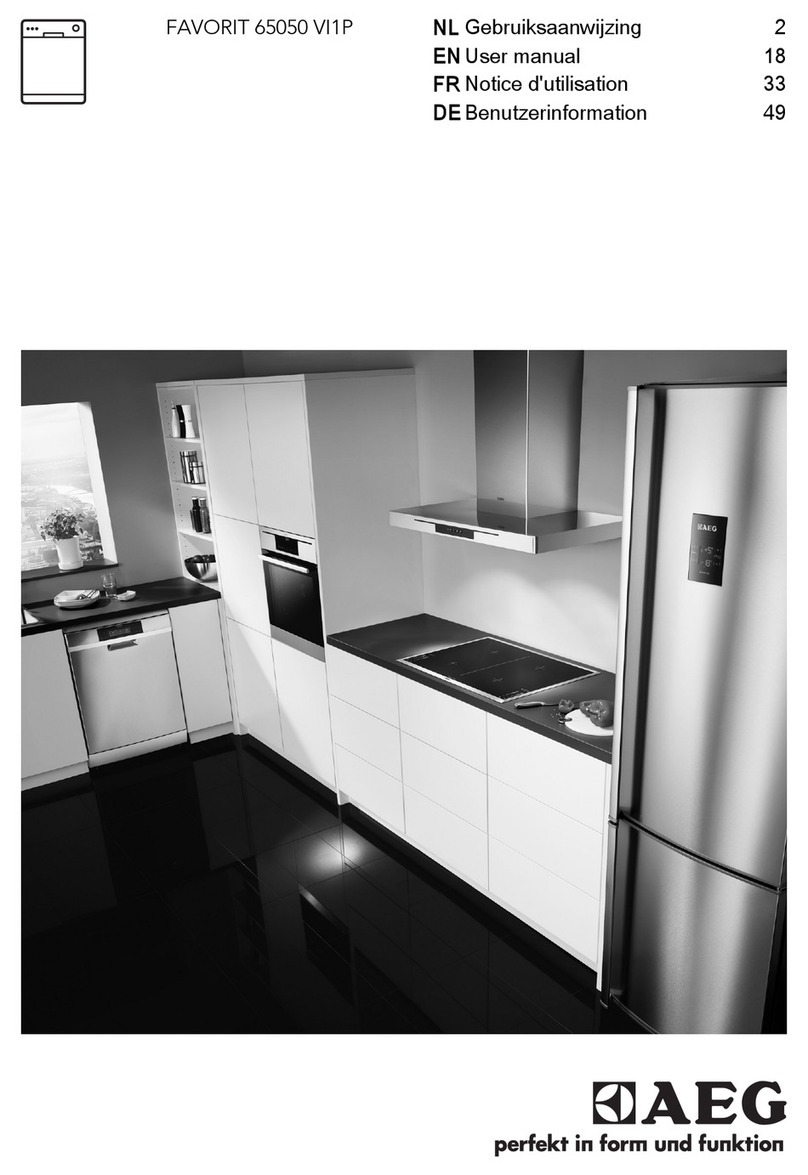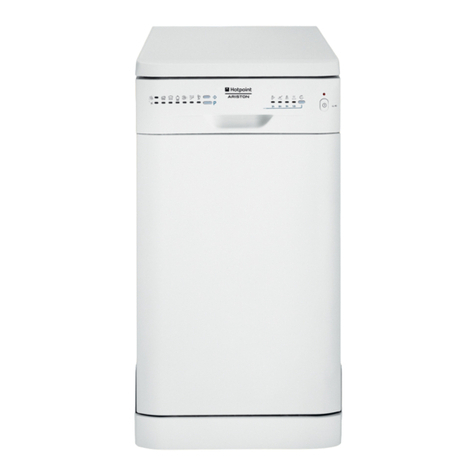
Do not wash plastic items unless they are marked
dishwasher safe or the equivalent. For plastic items
without mark, check the manufacturer's
recommendations.
Use only detergent additives designed for an
automatic dishwasher.
Never use soap, laundry detergent, or hand washing
detergent in your dishwasher.
Children should be supervised to ensure that they do
not play with the appliance.
The door should not be left open, since this could
increase the risk of tripping.
If the supply cord is damaged, it must be replaced by
the manufacturer or its service agent or a similarly
qualified person in order to avoid a hazard.
During installation, the power supply must not be
excessively or dangerously bent or flattened.
Do not tamper with controls.
The appliance is to be connected to the water mains
using new hose sets and that old hose-sets should
not be reused.
The maximum number of place settings to be
washed is 2.
The maximum permissible inlet water pressure is
1MPa.
The minimum permissible inlet water pressure is
0.04MPa.


